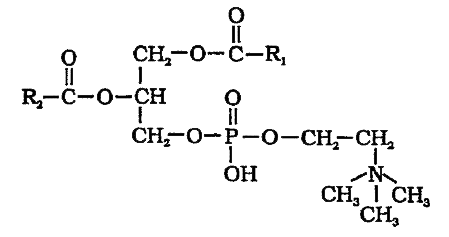Sketch the diagrammatic representation of the replication of Retrovirus inside an animal cell.
Step-by-Step Solution for the Replication of Retrovirus Inside an Animal Cell
1. Entry of the Retrovirus: The retrovirus, such as HIV, first attaches to the surface of the host animal cell and enters the cell. This can occur through fusion with the cell membrane or endocytosis.
2. Release of Viral RNA: Once inside the host cell, the retrovirus releases its RNA genome and enzymes, including reverse transcriptase, into the cytoplasm.
3. Reverse Transcription: The reverse transcriptase enzyme converts the viral RNA into complementary DNA (cDNA). This process is known as reverse transcription.
4. Integration into Host Genome: The newly formed cDNA is then integrated into the host cell's DNA. This is facilitated by another viral enzyme called integrase. The integrated viral DNA is referred to as a provirus.
5. Transcription and Translation: The host cell's machinery then transcribes the proviral DNA back into RNA. This RNA serves two purposes: it acts as the genome for new viral particles and is also translated into viral proteins.
6. Assembly of New Viruses: The newly synthesized viral RNA and proteins are assembled into new viral particles (virions) within the host cell.
7. Budding of New Viruses: The new virions are released from the host cell by budding off from the cell membrane. This process allows the virus to exit the cell and go on to infect other cells.
8. Infection of New Cells: The released viruses can now infect other healthy cells, repeating the cycle of infection and replication.
Diagrammatic Representation
- Step 1: Draw a circle to represent the animal cell.
- Step 2: Illustrate the entry of the retrovirus into the cell.
- Step 3: Show the release of viral RNA and reverse transcriptase inside the cytoplasm.
- Step 4: Depict the conversion of RNA to DNA (reverse transcription).
- Step 5: Illustrate the integration of cDNA into the host genome.
- Step 6: Show the transcription of the proviral DNA into new viral RNA.
- Step 7: Illustrate the assembly of new viral particles.
- Step 8: Depict the budding of new viruses from the cell membrane.
- Step 1: Draw a circle to represent the animal cell.
- Step 2: Illustrate the entry of the retrovirus into the cell.
- Step 3: Show the release of viral RNA and reverse transcriptase inside the cytoplasm.
- Step 4: Depict the conversion of RNA to DNA (reverse transcription).
- Step 5: Illustrate the integration of cDNA into the host genome.
- Step 6: Show the transcription of the proviral DNA into new viral RNA.
- Step 7: Illustrate the assembly of new viral particles.
- Step 8: Depict the budding of new viruses from the cell membrane.
Topper's Solved these Questions
- HUMAN HEALTH AND DISEASESBOOK - MODERN PUBLICATIONCHAPTER - HUMAN HEALTH AND DISEASESEXERCISE - REVISION EXERCISES (IV. SHORT ANSWER TYPE - II QUESTIONS) (B. QUESTIONS FROM CBSE EXAMINATIONS)
18 Videos
- HUMAN HEALTH AND DISEASESBOOK - MODERN PUBLICATIONCHAPTER - HUMAN HEALTH AND DISEASESEXERCISE - REVISION EXERCISES (V. CASE - BASED SHORT ANSWER QUESTIONS)
2 Videos
- HUMAN HEALTH AND DISEASESBOOK - MODERN PUBLICATIONCHAPTER - HUMAN HEALTH AND DISEASESEXERCISE - REVISION EXERCISES (III. SHORT ANSWER TYPE - I QUESTIONS) (B. QUESTIONS FROM CBSE EXAMINATIONS)
33 Videos
- EVOLUTIONBOOK - MODERN PUBLICATIONCHAPTER - EVOLUTIONEXERCISE - CHAPTER PRACTICE TEST (SECTION-D)(CASE-BASED SHORT ANWER )(THREE MARK EACH)
2 Videos
- HUMAN REPRODUCTIONBOOK - MODERN PUBLICATIONCHAPTER - HUMAN REPRODUCTIONEXERCISE - CHAPTER PRACTICE TEST (SECTION - D LONG TYPE QUESTION)
2 Videos
Similar Questions
Knowledge Check

The above diagrammatic representation is the formula of -ALecithinBCholesterolCUridylic acidDPhosphatic acidThe diagrammatic representation of the mechanism of hormone action of
 Aa-protein hormone, b-steroid hormoneBa-steroid hormone, b-protein hormoneCa protein hormone, b-iodothyroninesDa steroid hormone, b-iodothyronines
Aa-protein hormone, b-steroid hormoneBa-steroid hormone, b-protein hormoneCa protein hormone, b-iodothyroninesDa steroid hormone, b-iodothyroninesDiagrammatic representation of chromosomes I s
AKaryotypeBIdiogramCChromosome mapDPhenogram
Cell representation
View SolutionGive diagrammatic representation of pyramid of numbers.
View SolutionDraw diagrammatic representation of life cycle of Dryopteris .
View SolutionThe objective of diagrammatic representation of data is
View SolutionThe diagrammatic representation of chromosomes is known as
View Solution
